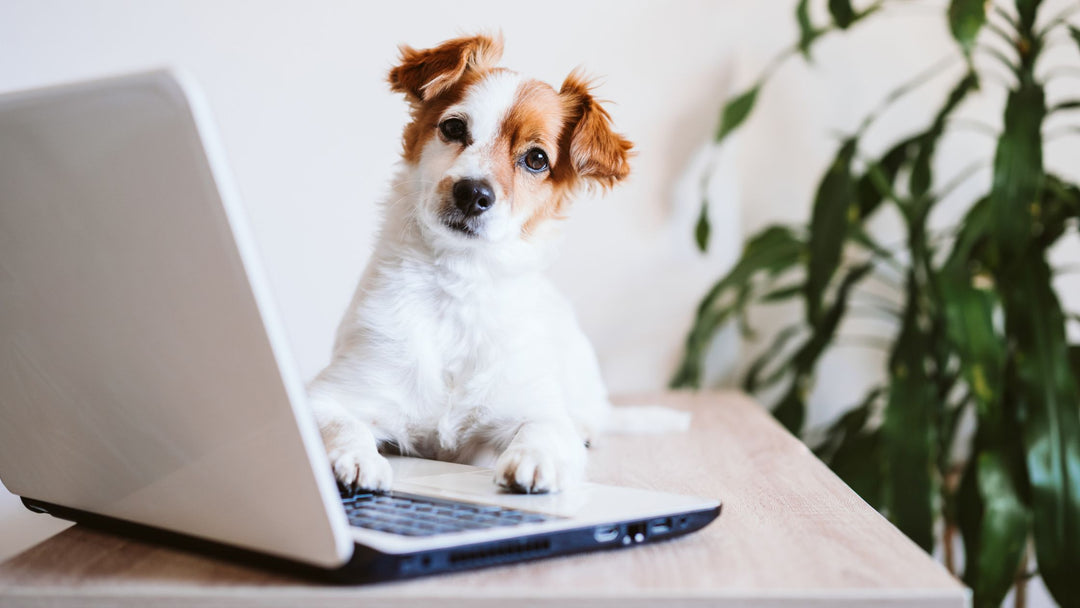Lingering v. Residual Odor
The easiest way to wrap your head around the concept of lingering odor and residual odor is to think about bacon.
When you are cooking bacon, the room will fill with the lovely aroma of bacon. Yummy! Even after you are done cooking the bacon, have eaten your fill and put the rest back in the fridge, there may be a lingering aroma of bacon. This is lingering odor. Chasing down this aroma is not going to get you anywhere. Over time, it will dissipate.
Now, as you were cooking, your bacon was likely spitting bacon grease all over your kitchen. Onto the backsplash. Onto the cooktop. Onto the counters. Onto the floor. This bacon grease is residual odor...it is bacon! Even after you have eaten the cooked bacon and put the rest back in the fridge, if you then let your dog into the room, they would happily lick up all this bacon grease. Because it is bacon, it is source.
What does all this have to do with Scent Work?
Well, it means that we have to be super careful NOT to have RESIDUAL ODOR in our search areas. If a dog were to hit on residual odor, they would be 100% correct...but if we do not reward them or worst still, tell them they are WRONG, well, then we are diminishing the value in odor, whatever that may be (Birch, Anise, Clove, Cyprus, etc.). That is bad.
How can we go about avoiding all of this? Careful handling of our odor, odor vessels and adhesives is the name of the game. We cover this in more detail in our Prepping and Storing Odor Webinar, but essentially, store your adhesives (putty, GlueDots, tape, etc.) AWAY from your odor kit and odor, ensure you do NOT have target odor oil on the outside of your odor vessels and store all odor-related items together and AWAY from any "clean" items.
"But shouldn't a dog work through lingering odor?"
They can. We oftentimes see this when a hide is moved from one location to another, such as the hide was on a chair leg in one run and then placed onto a wall the next. IF proper odor handling techniques were followed, there may be LINGERING ODOR near the chair leg, aka the aroma of the bacon. The dog can work through this to eventually find source or where the hide is now.
BUT, if proper odor handling techniques were NOT used and there was actual transfer of target oil into the environment, we would then have contamination and RESIDUAL ODOR. The dog hitting on or indicating on this would 100% correct, but you and I would have no way of knowing this. Therefore, we will not reward our dogs or may even tell them they are wrong, when in actuality, they are correct.
Another good practice to avoid the potential of RESIDUAL ODOR is, once your training session is finished, wipe down the areas where you had any odor vessels with something such as white vinegar or dawn and soap. Air out the area for a minimum of 10-15 minutes before running your dog again within the space.
An important caveat, however, are removeable objects. If you place a hide within a removeable object such as a container of any sort, a fake rock or anything that can be removed from the search area, that object must now and forever be deemed an odor object. It must NOT be used in subsequent searches as a "clean" object and should thus be stored with other odor objects when not in use.
The same applies for buried hides that are featured in AKC Scent Work, whether you are using sand or water totes. The containers that have a hide within them must always and forever be deemed "hot" odor containers afterwards. They should be stored AWAY from any "clean" containers and must NOT be used in a subsequent search as a "clean" container.
The likelihood the odor oil will seep out of the odor vessel and into the sand or water, leaving behind RESIDUAL ODOR, and being soaked up by the plastic container itself, it simply too high. Meaning, the dogs would be CORRECTLY hitting on these containers even though a new odor vessel has not been placed within them. Handlers will become frustrated, telling the dog they are incorrect...when in actuality, the dog is 100% right! Doing this repeatedly will diminish the dog's understanding that odor is indeed valuable and worth hunting for, eating away at their desire to even play the game at all.
It is crucial to understand what lingering odor and residual odor ae if you are involved in Scent Work. Thank goodness for delicious bacon, helping to make these concepts so much clearer!
Happy Training!
#residualodor #lingeringodor #scentworktraining #noseworktraining #scentwork #nosework #scentworku #scentworkuniversity
More from
>
Handler Tips
Understanding Odor
Join Our Newsletter
Stay up to date with all the happenings at Scent Work University, including the release of new online courses, seminars, webinars, eBooks and receive exclusive promotions and discounts!


